Blog
Can Dogs Eat Shrimp? Everything You Need to Know
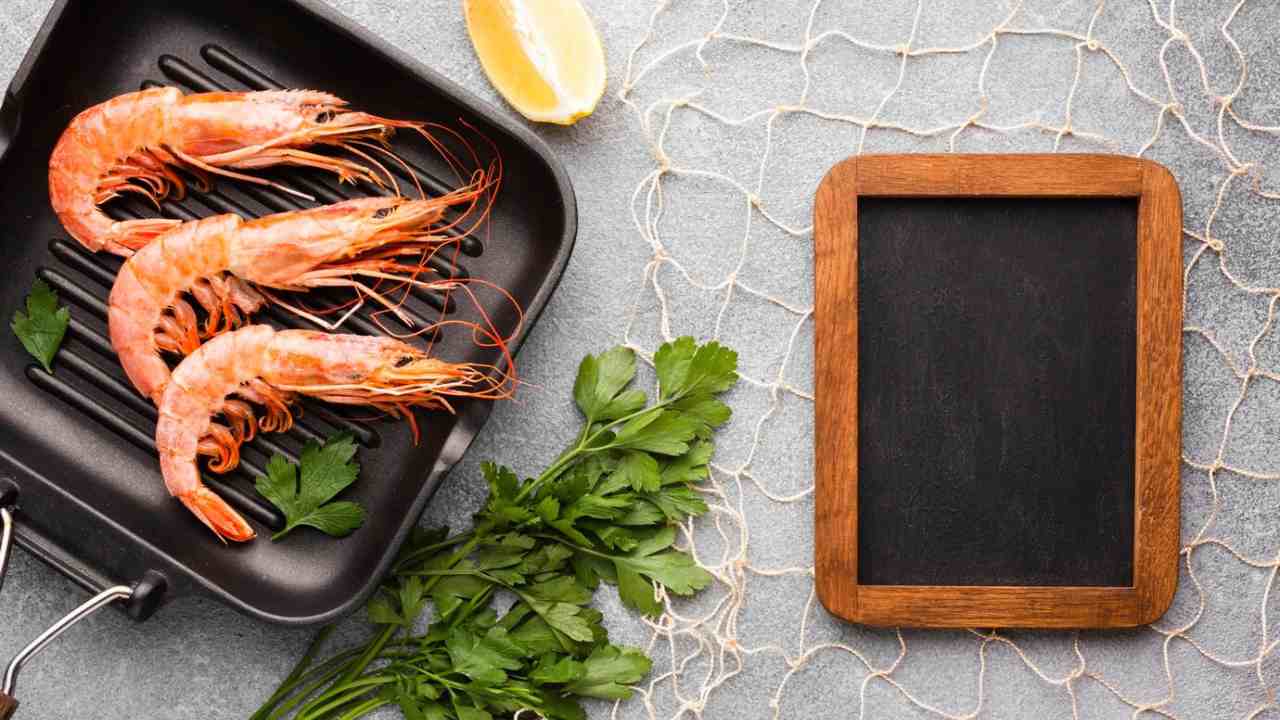
As a pet parent, it’s natural to want to treat your pup to some tasty human food now and then. But before you toss a few shrimp their way, it’s crucial to understand the potential benefits and risks.
In this comprehensive guide, we’ll dive into everything you need to know about feeding shrimp to your dog.
So, let’s get started!
Contents
The Nutritional Benefits of Shrimp for Dogs:

Let’s start with the positives: shrimp can be a nutritious treat for dogs when given in moderation. Packed with vital vitamins and minerals, this low-calorie, high-nutrient food can greatly benefit your dog’s overall health. Here are some key nutritional benefits of shrimp:
1. Omega-3 fatty acids
The essential fatty acids promote optimal cell function and can help your dog’s body absorb fat-soluble vitamins A, D, E, and K. Some studies suggest omega-3s may benefit dogs with certain conditions like allergic skin disease, heart disease, and osteoarthritis.
2. Iodine
Iodine is vital for your dog’s thyroid function and brain development.
3. Antioxidants
Astaxanthin, the main antioxidant in shrimp, can protect your dog’s cells from damage by free radicals, potentially decreasing the risk of chronic disease.
4. Protein
Protein is an essential nutrient for cell formation, growth, and function in dogs.

5. B vitamins
Shrimp is particularly high in vitamin B12, which is important for red blood cell formation and brain cell function.
SHOP NOW
6. Potassium and phosphorus
These minerals support muscle function, maintain normal fluid levels, and contribute to strong bones and teeth.
While shrimp offers an impressive nutritional profile, it’s important to remember that treats should only make up about 10% of your dog’s diet. The remaining 90% should come from a well-balanced, veterinarian-recommended dog food.
Safety Considerations- How to Safely Feed Shrimp to Your Dog
Alright, so you’ve decided to treat your pup to some tasty shrimp. Before you start tossing those little crustaceans their way, let’s talk about how to do it safely. Here are some essential tips to keep in mind:
1. Shell-free is the way to be
Shrimp shells and tails might seem harmless, but they can be a choking hazard and could lead to some serious digestive discomfort for your dog. So, before serving, make sure to remove all the shells and tails. And keep those discarded bits out of your pup’s reach – trust me, they’ll sniff them out if given the chance!
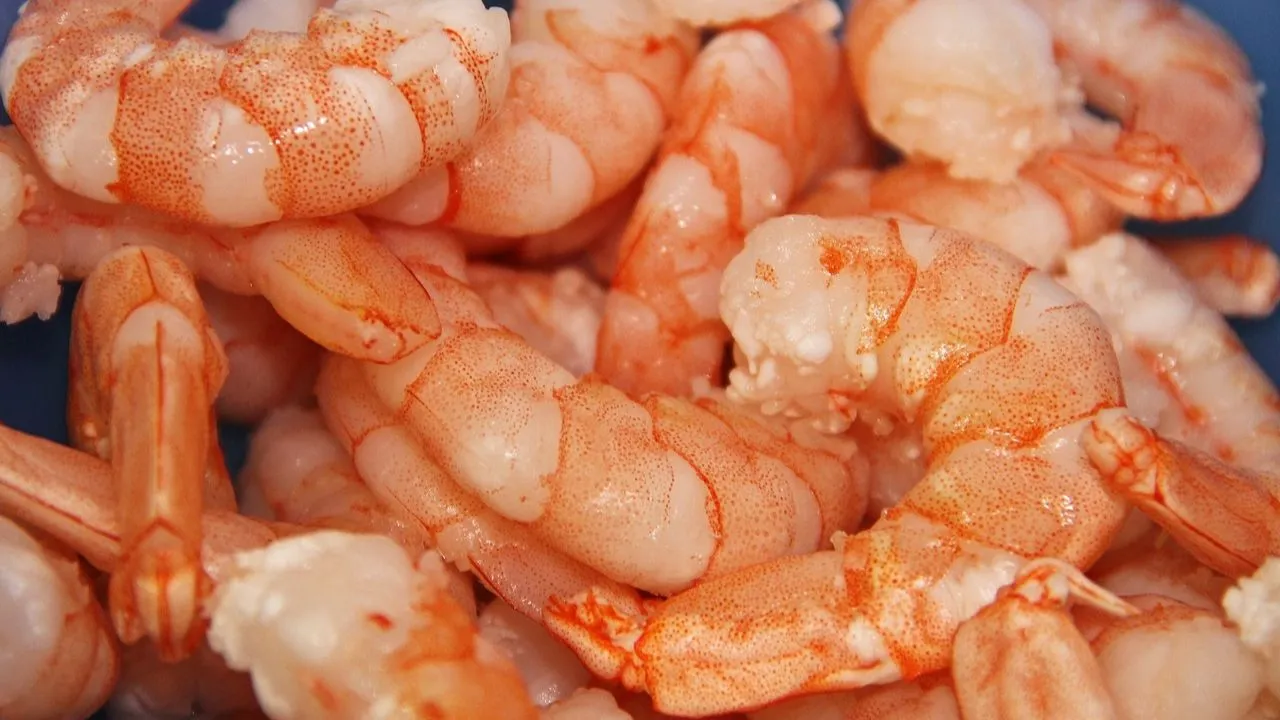
2. Cook it Like You Mean it.
I know, I know, some of us humans enjoy a good raw shrimp cocktail now and then. But for your dog, raw shrimp is a big no-no. It can contain harmful bacteria like Salmonella, E. coli, and Vibrio that can lead to some pretty nasty food poisoning. So, always cook the shrimp thoroughly before serving it to your furry friend.
3. Keep it Simple, Silly
When it comes to cooking shrimp for your dog, less is more. Skip the fancy seasonings, sauces, and oils. Your dog’s taste buds are different from yours, so plain, boiled, or grilled shrimp is all they need to do a happy dance.
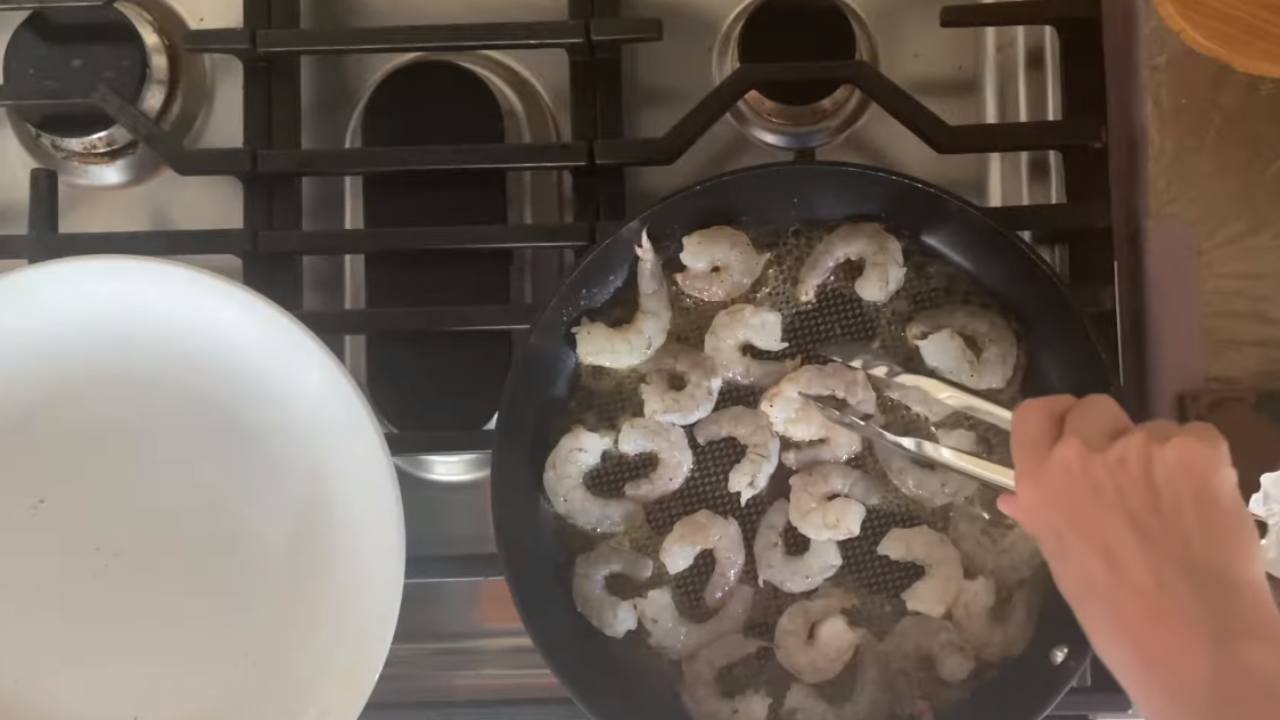
4. Allergies Happen
Just like us, dogs can develop allergies to certain foods, like shellfish. If your canine shows signs of an allergic reaction after eating shrimp (think hives, swelling, vomiting, or difficulty breathing), it’s time to call the vet. In rare instances, a severe allergic reaction can be life-threatening, so don’t hesitate to seek medical attention if needed.
5. Watch That Waistline
While shrimp are low in calories, they’re comparatively high in fat and cholesterol compared to other lean proteins. So, if your dog has a sensitive tummy or is prone to pancreatitis, shrimp might not be the best treat choice. When in doubt, chat with your vet to see if shrimp is right for your pup.
How Many Shrimp Can Dogs Eat?
Now that we’ve covered the safety basics, let’s talk about serving size. A good rule of thumb is to limit treats to no more than 10% of your pup’s daily calorie intake. The rest should come from a balanced, veterinarian-approved dog food. To figure out how much shrimp is appropriate for your pup, check out this handy table:
| Dog Size | wEIGHT | Shrimp Serving Size | Example Breeds |
|---|---|---|---|
| Extra-small | 2-20 pounds | 1/2 medium shrimp | Yorkies, Chihuahuas, Pomeranians, Pugs, Shih Tzus |
| Small | 21-30 pounds | 1 medium shrimp | Basenjis, Beagles, Miniature Australian Shepherds |
| Medium | 31-50 pounds | 2 medium shrimp | Basset Hounds, Border Collies, Australian Cattle Dogs, Siberian Huskies |
| Large | 51-90 pounds | 3 medium shrimp | Pit Bulls, German Shepherds, Labrador Retrievers, Australian Shepherds |
| Extra-large | 91+ pounds | Up to 4 medium shrimp | Newfoundlands, Bernese Mountain Dogs, St. Bernards, Great Pyrenees |
When it’s time to serve up the shrimp, make sure to cut it into bite-sized pieces appropriate for your dog’s size. This will greatly reduce the possibility of choking hazards.
There are tons of ways to incorporate this tasty treat into your pup’s diet, too. Try mixing it into their regular food, combining it with some dog-safe veggies for a tasty mix, or stuffing it into a puzzle toy for an engaging treat. You can even pair it with plain, cooked rice for a simple, bland meal that’s perfect for dogs recovering from digestive upset.
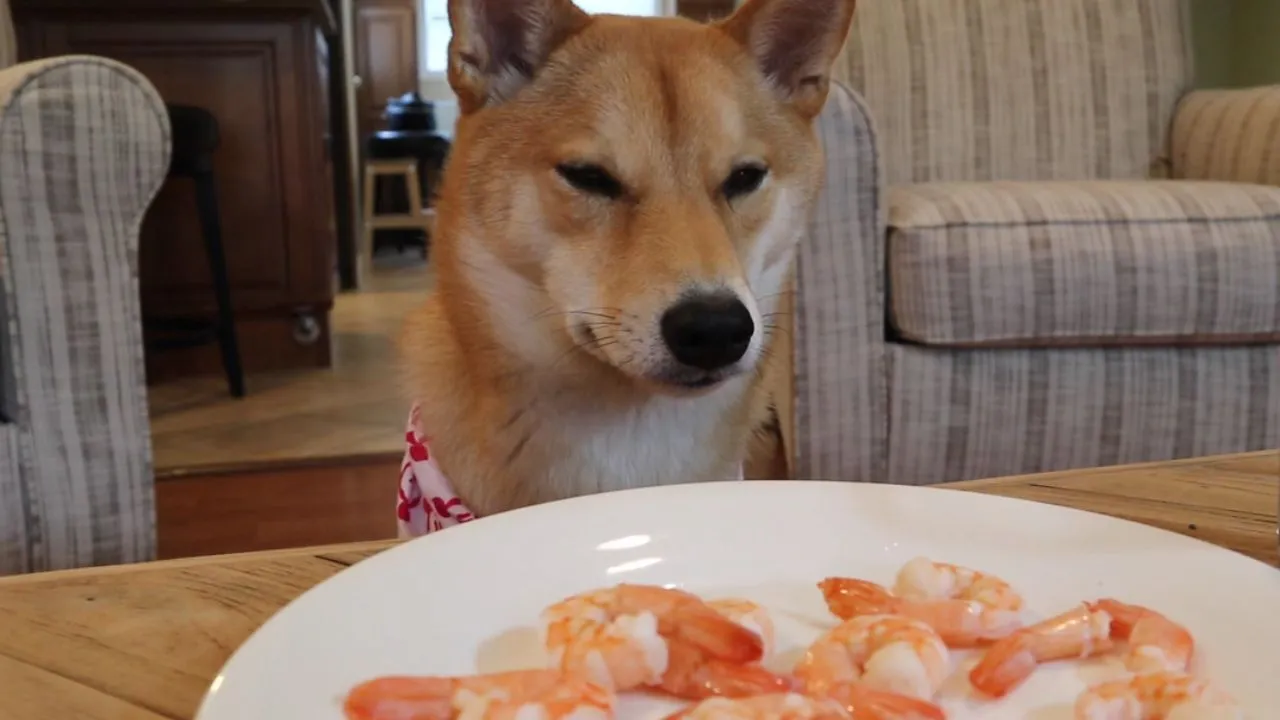
As with any new food, keep an eye on your pup after introducing shrimp to their diet. Watch for signs of digestive issues or discomfort, and don’t hesitate to call your vet if you have any concerns. With a little preparation and some common sense, you and your dog can safely enjoy the occasional shrimp treat together.
SHOP NOW
Other Human Foods Safe for Dogs:
Although shrimp can be a delightful and nourishing snack, it’s not the sole human food suitable for occasional sharing with your furry friend in moderation. Here are a few other options to consider:
1. Rice: Whether white or brown, rice offers dogs a rich source of carbohydrates and fiber. White rice, in particular, is gentle on the stomach and can be incorporated into a bland diet to soothe digestive issues.
2. Chicken: Plain, cooked chicken (boiled or grilled) is an excellent source of lean protein. Just don’t forget to remove all bones and skip the seasoning.
3. Carrots: Raw or cooked carrots are a healthy, low-calorie snack for dogs. They’re high in fiber and beta-carotene, which is converted into vitamin A, promoting healthy vision and immune function.
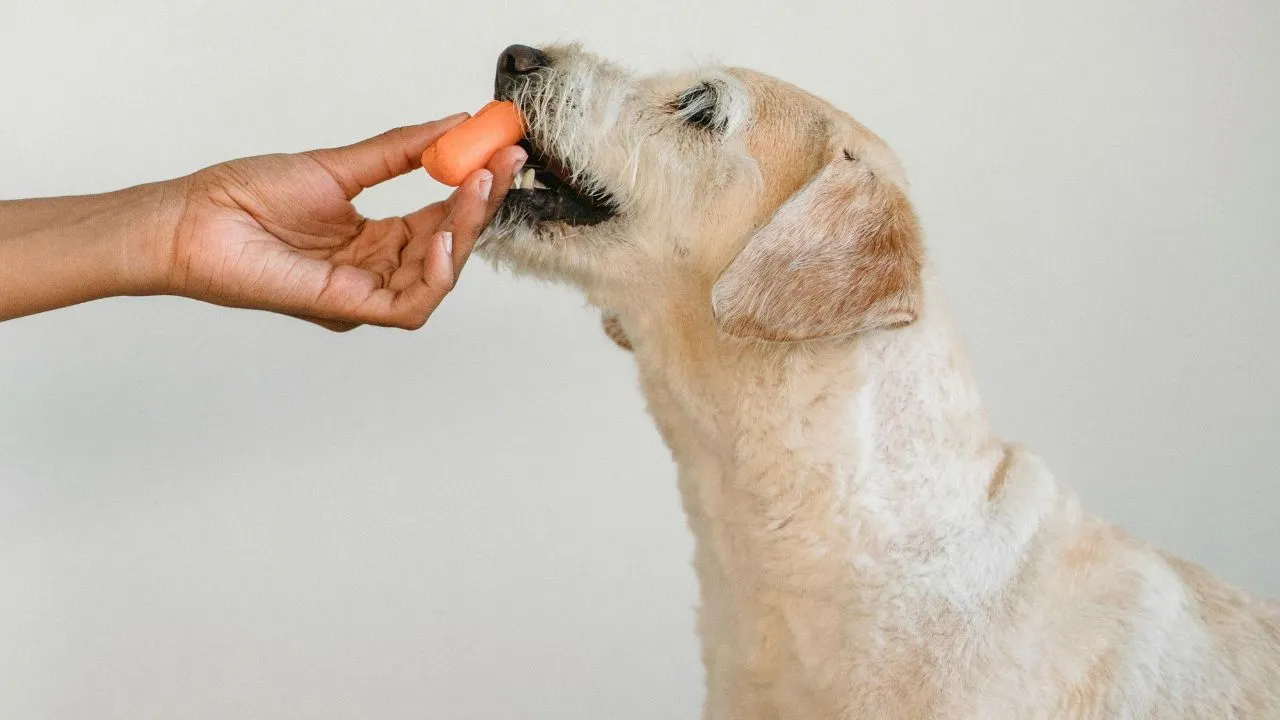
4. Eggs: Rich in protein and essential fatty acids, cooked eggs (hard-boiled or scrambled) are a delicious and easy treat. Avoid adding cheese, butter, or other toppings.
5. Plain Yogurt: Unsweetened, plain yogurt can be a good source of probiotics for dogs, promoting gut health. It’s best to avoid flavored or sweetened varieties, as they often contain artificial additives that can be harmful to dogs.
6. Pumpkin: Plain, cooked pumpkin (not the sugary pie filling) can help with digestive issues such as diarrhea and constipation due to its high fiber content. It’s also rich in beta-carotene and other nutrients beneficial for dogs.
Other Human Foods to Avoid
Just as important as knowing what human foods are safe for your dog is understanding which ones to avoid. Some common foods that are toxic or dangerous for dogs include:
1. Onions and garlic: These allium family members can cause hemolytic anemia in dogs and should be avoided in all forms (raw, cooked, powdered).
2. Macadamia nuts: Toxic to dogs, macadamia nuts can cause vomiting, weakness, muscle tremors, and hyperthermia.
3. Xylitol: This artificial sweetener found in sugar-free gum, peanut butter, baked goods, and other products can cause severe hypoglycemia and liver failure in dogs. Always check labels before sharing any human food.

For More Information
While shrimp can be a delicious and healthy snake for your pup, it’s just one of many human foods that can be safely shared in moderation. If you’re curious about other veggies, fruits, or proteins that your dog might enjoy, check out our comprehensive “Can My Dog Eat?” directory.
From crunchy cucumbers to colorful cauliflower, our directory is packed with information on vegetable safety for dogs. You’ll find a wealth of articles on foods that are safe, dangerous, or even toxic for your furry friend to consume. So, go ahead!